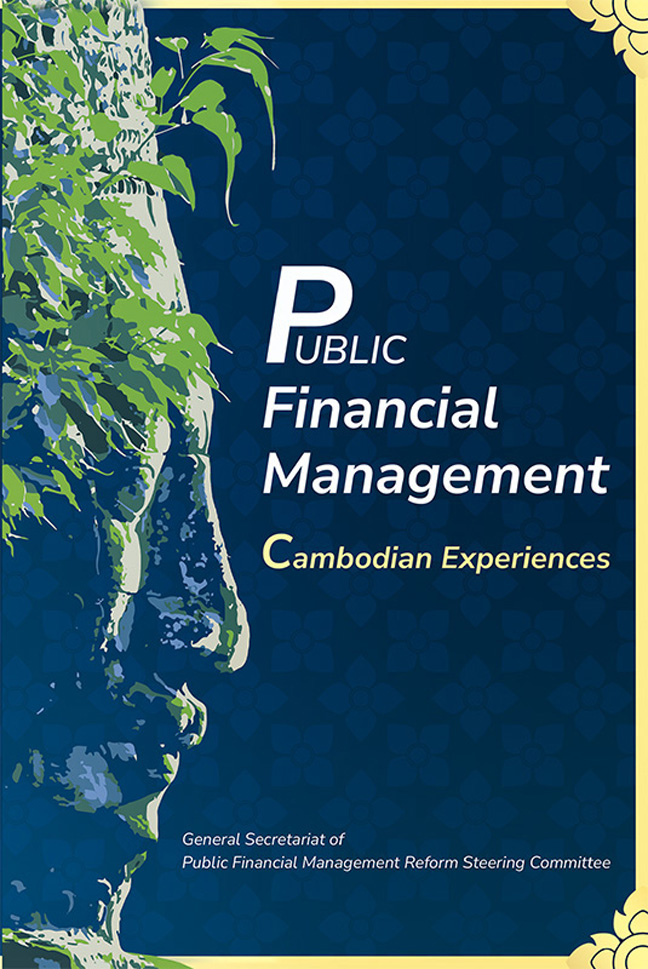Book contents
- Frontmatter
- Contents
- List of Figures
- List of Tables
- Foreword
- Preface
- Acknowledgements
- Notes on the Author, Editors and Contributors
- Abbreviations
- Chapter 1 Introduction
- Chapter 2 Overview of Cambodian Economy and PFM Reform Program
- Chapter 3 Strategic Planning and Budgeting
- Chapter 4 Components of PFM in Cambodia
- Chapter 5 PFM System Assessment Tools
- Chapter 6 Case Study
- Chapter 7 PFM Experiences of Selected ASEAN and OECD Countries
- Bibliography
- Glossary
- Index
Chapter 2 - Overview of Cambodian Economy and PFM Reform Program
Published online by Cambridge University Press: 26 March 2024
- Frontmatter
- Contents
- List of Figures
- List of Tables
- Foreword
- Preface
- Acknowledgements
- Notes on the Author, Editors and Contributors
- Abbreviations
- Chapter 1 Introduction
- Chapter 2 Overview of Cambodian Economy and PFM Reform Program
- Chapter 3 Strategic Planning and Budgeting
- Chapter 4 Components of PFM in Cambodia
- Chapter 5 PFM System Assessment Tools
- Chapter 6 Case Study
- Chapter 7 PFM Experiences of Selected ASEAN and OECD Countries
- Bibliography
- Glossary
- Index
Summary
2.1 HISTORICAL OVERVIEW OF THECAMBODIAN ECONOMY
Since its independence from France in 1953, Cambodia has had an unfortunate history of sudden regime changes that led to repeated changes in economic policies. During the Sangkum Reastr Niyum Regime (1953–70) period, the government placed importance on the agricultural sector, promoting policies to increase rice production yields by adopting innovative irrigation systems. The industrial sector benefited from foreign economic assistance from Czechoslovakia, Japan, Australia, China, France and the Soviet Union, including the production of textiles, glass, tires, rubber and sugar, while the government also expanded transportation and communication networks.
During the Khmer Republic Regime (1970–75) the economy was called the “Wartime Economy”. The war that engulfed the rest of Indochina spread to Cambodia in April 1970. Wartime conditions had a major impact on the country’s economy. Production and export of all commodities significantly dropped as insecurity spread throughout the countryside. Despite the government’s effort to liberalize the economy to save the nation from economic disaster by implementing a comprehensive program of reforms, maintaining a policy of strict political neutrality, and accepting foreign assistance, political instability has plunged the country into civil war.
During the Democratic Kampuchea Regime, more commonly known as the Khmer Rouge Regime (1975–79), the economic and financial systems were devastated. This regime overhauled the social and economic system; there was no currency, no bank or any monetary transactions, and no schools. The regime tried to build the economy on the agricultural sector is supported by local small enterprises and handicrafts. Part of its economic policy was to use revenues from agriculture to support the development of the industrial sector, which it later used to support the agricultural sector. However, this approach turned out to be a huge failure for the country, resulting in starvation and the death of millions of people.
In January 1979, the formation of the People’s Republic of Kampuchea (PRK) marked a new stage in the country’s rehabilitation and reconstruction. Cambodia employed a Soviet-style planned economy throughout the 1980s.
- Type
- Chapter
- Information
- Public Financial ManagementCambodian Experiences, pp. 8 - 41Publisher: ISEAS–Yusof Ishak InstitutePrint publication year: 2023



